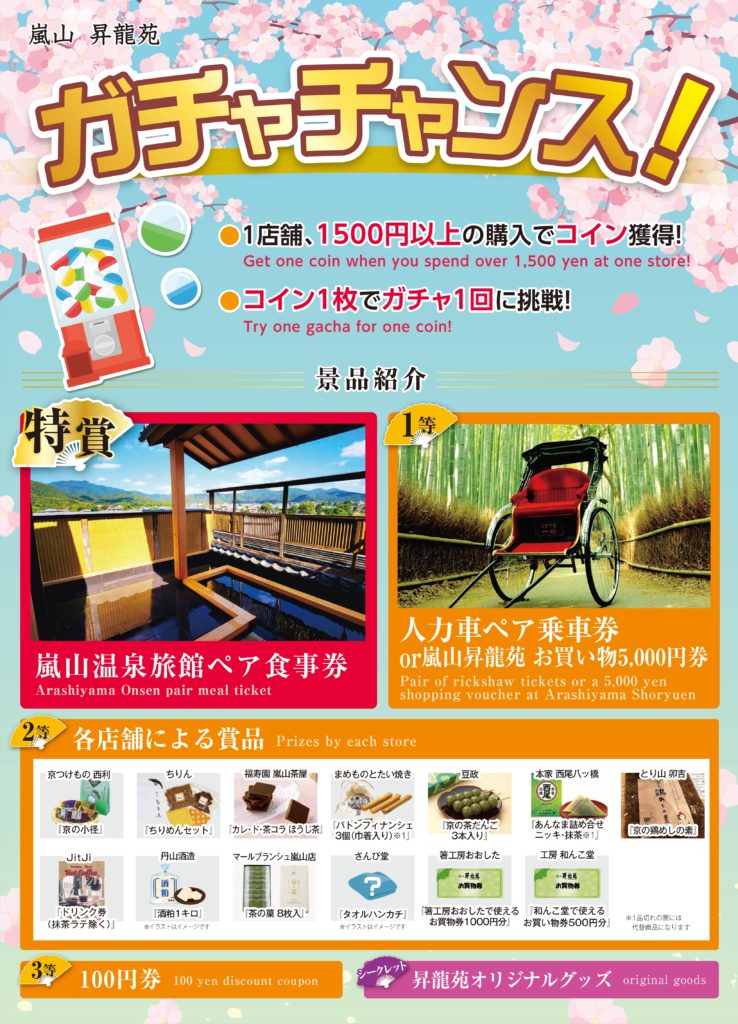2025年3月5日(水)2025年3月15日(日)~31日(日)春の昇龍祭を開催します!
2025年3月15日(土)~31日(日)まで、春の昇龍祭を開催します!
この時期ならではの春のおすすめ商品を多数取り揃えて、
昇龍苑でお客様をお待ちしております。
お客様の皆さまがお得にお買い物をお楽しみできるような特別企画「ガチャチャンス」を実施します!
たくさんの皆さまに豪華景品が当選するチャンスです!
その他、京都が誇る伝統芸能団体による演舞の披露など、
多数のイベントで盛り上がる嵐山昇龍苑へ、ぜひお越しください!
~春の昇龍祭ガチャキャンペーン~
●参加方法●
各店舗、1,500円以上のご購入でガチャメダル1枚Get!
ガチャガチャに挑戦できます。
☆賞品紹介☆
特賞:嵐山温泉旅館ペア食事券
1等:人力車ペア、もしくは昇龍苑お買い物5,000円券
2等:各店舗による賞品
3等:昇龍苑お買い物100円券
~京都鬼剣舞【観覧無料】~
3月23日(日)は、昇龍苑内にて、京都鬼剣舞の無料公演を実施いたします。
発祥は岩手県で、京都でその伝統を引き継ぎ「京都流」の鬼剣舞を形成し後世に引き継ぐ活動をしている「京都鬼剣舞」の皆さま。
岩手県の北上和賀地方に伝わる鬼剣舞の源流。起源は大宝年間(701〜704)に修験の祖である役の行者小角が念仏を唱えながら踊ったのが始まりとも、大同年間(806〜810)に羽黒山の法印善行院が大日如来の化身から悪魔退散・衆生済度の念仏踊りとして伝えられたともいわれています。
当日は2回公演を行います。(各20~30分ほど)
・11:30~
・14:30~
昇龍苑だけの特別公演になりますので、貴重な機会をお見逃しなく!!
↓「鬼剣舞」については下記サイトもご覧ください。
http://www.bunka.pref.iwate.jp/archive/ent15
嵐山のベストシーズンになった今、桜と京の老舗でお買い物を、ごゆっくりお楽しみください♪

